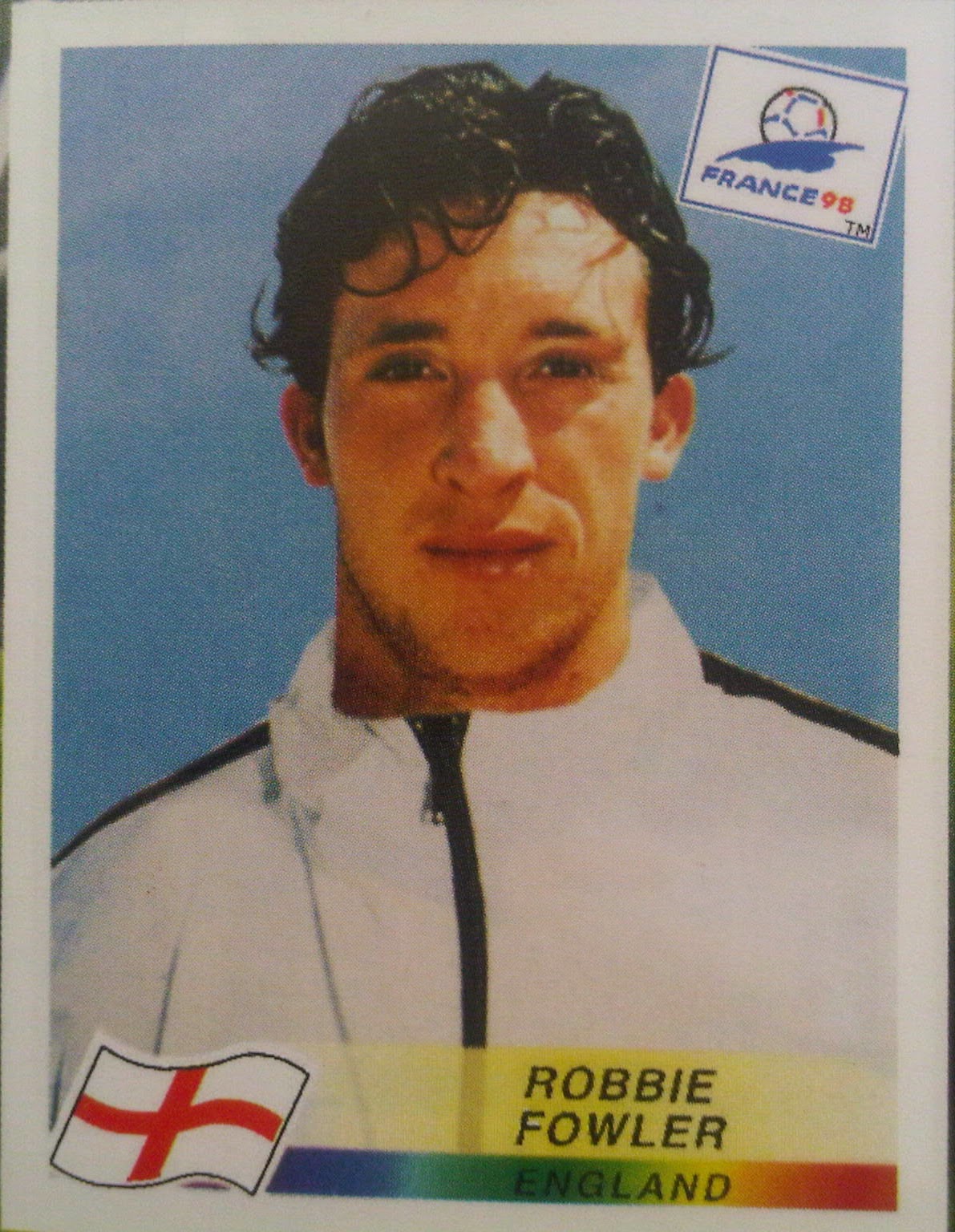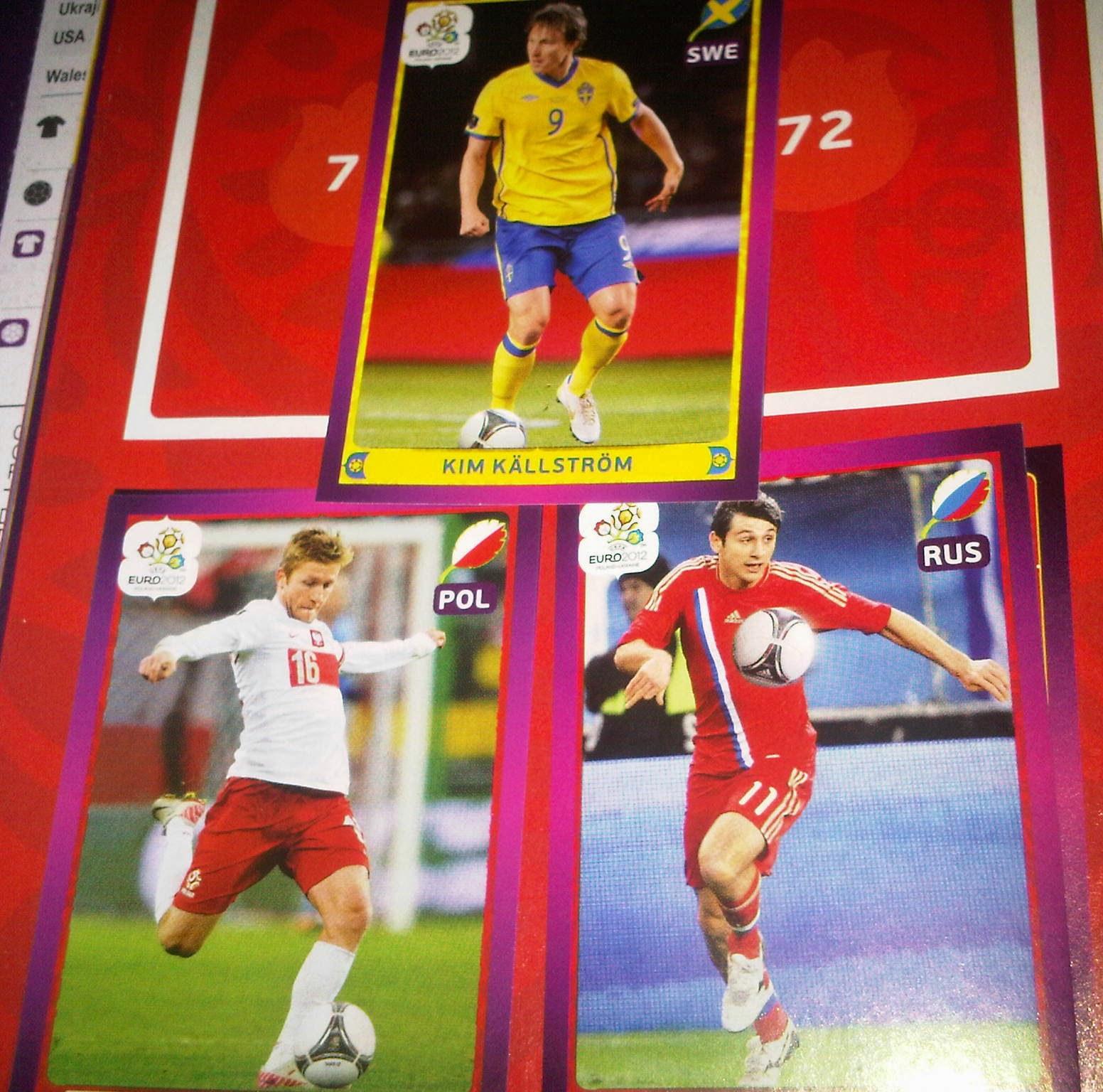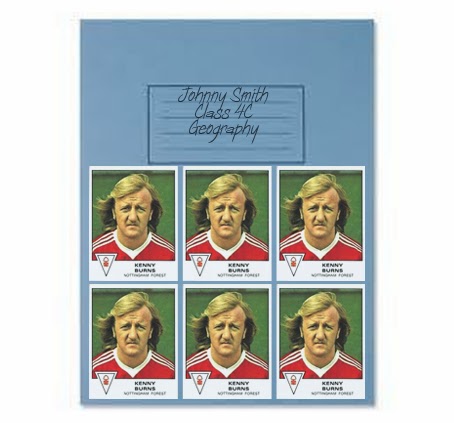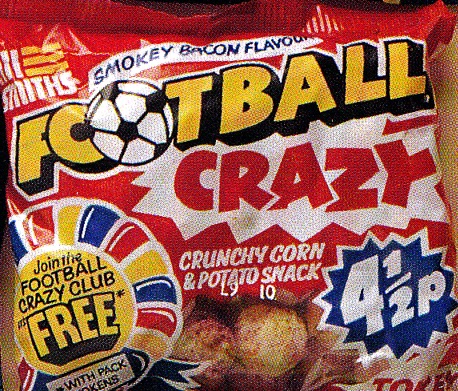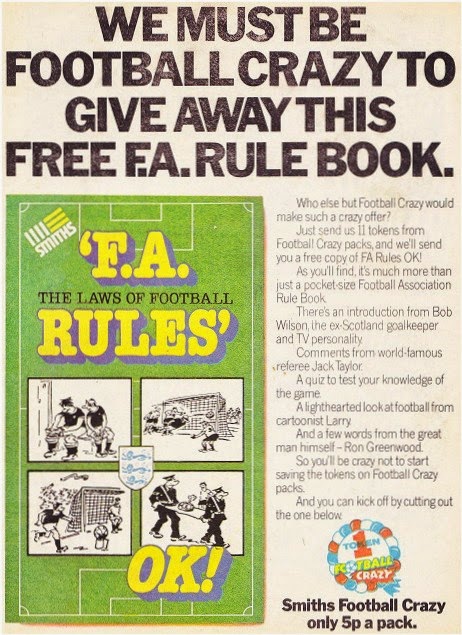A few weeks ago, we gave you
the first part of our double-header where we look at the ying and yang of collecting Panini stickers. Previously, we explored the delirium that could be gained from the opening of a simple packet or the sight of a shiny badge among its contents.
It wasn't always that good, though - far from it. Sometimes the act of collecting Panini stickers could make us disappointed, frustrated and downright angry. Well maybe not angry... considerably displeased, perhaps. So let's look at the downside of having an incontrovertible addiction to this self-adhesive sideline...
Misaligned multi-part picturesSometimes Panini could be their own worst enemy, but with the best of intentions. From very early on, the Italian company knew that it could make a big impression by combining multiple stickers together to make a bigger image. This was particularly useful for team pictures where lots of detail could be seen in a clearer way.
Unfortunately the stickers didn't always line up perfectly in the album, and this was never clearer than when Panini created four- or even nine-part pictures. Piecing together stickers to make a larger whole required spatial awareness and an attention to detail known only to the world’s finest forgers. Even when possessing such undoubted skills, however, the outcome could look, well… cubist.
If you were applying each of your stickers in, say, a clockwise pattern, you had half a chance of creating a seamless masterpiece. All that was required was a little overlapping here and there to account for any mis-cutting of edges on Panini’s part, and you were away and laughing. Unfortunately, it was often the case that the first two stickers you obtained were for the opposite corners of the big picture. This meant after sticking in the first corner, you couldn't tell for certain whether the opposite one was going to be in the right place, let alone correctly aligned. And don’t even think about using the outlines in your album as a guide - that would likely lead to misery and frustration.
If you knew that each of the individual puzzle pieces had been cut precisely along their horizontal and vertical axis, you’d have had far more confidence in placing your stickers where you thought they ought to go. Sadly, Panini’s cutting machines often had all the accuracy of a Daily Mail article with the word ‘foreign’ in it, thereby ensuring a world of pain and agony for those of us wanting to create the perfect composite display.
Bad cut 'n' paste jobsTruth be told, Panini are by no means the worst offenders when it comes to bad Photoshoppery. Other unnamed sticker manufacturers *coughFKS* were making ham-fisted attempts at tweaking their pictures long before Photoshop was even invented - and making a worse job of it. The same can be said of Topps’ trading cards too.
The fact is that sometimes a new sticker collection goes into production just too late to allow for new photographs to be taken, so a last-minute artistic amendment is required to make a player picture look technically correct.
This is all well and good… if the doctoring is done respectfully and with a deftness of touch. Unfortunately Panini didn't always succeed in this respect, and the results tended to be, at best, confusing - at worst, an utter horror show!
This particular crime (and you’d be surprised just how prolific it was and still is) usually manifests itself in the phenomenon known as ‘random head on generic shirt / tracksuit.’
![]()
These are often done for a variety of reasons. As already mentioned, a player might be new to a club at time of printing so there is no official head shot of him in the correct shirt. Sometimes the team just doesn't have a collection of Panini-friendly head shots (this is especially common amongst international teams and usually affects smaller nations). More common, however, the Sweeney Todd-esque butchery occurs due to the dreaded licensing issue, which we’ll come to later.
When these cut 'n' paste jobs happen, a number of factors conspire to determine the quality of the outcome. How much time the artist had, the quality of the pictures available, but usually the overriding factor would appear to be how much of a toss the artist could give… often not much.
As an example, we present possibly the worst ever example...Robbie Fowler from Euro 96. Come on! At least paste the head
behind the shell suit collar! Disgraceful!
Licensing IssuesWe get it. In these days of image rights and tightly controlled cash cows, Panini will alas not be able to have free reign on everyone’s pictures. A common occurrence in early '90s video games, a lack of official license meant that non FIFA titles would often see the London Blues featuring Jean Frank O’Zola squaring up to the Northern Reds and their star man, Derek Canota, and we just accepted this. It even added to the feeling of rebellion if you preferred the non-officially endorsed games.
![]()
Yet for Panini this state of affairs has brought nothing but derision. Having looked back through the years, it’s clear that this used to affect a lot of international teams, but of course in the days before Google, our innocent eyes saw no wrong. Could we really be so sure that wasn't Saudi Arabia’s actual kit that season? Nowadays, it’s a lot harder to get away with, but what irks the most in recent times is that of the England team pages.
Since rival Merlin got their hands on the exclusive rights to the England team, we've been subjected to a parade of shame, with the famous Three Lions replaced by nothing more than a circle with a red cross in. Now maybe we could deal with this if it was the worst it ever got, but the horror continues.
![]()
For the Euro 2012 album, each team had not only their usual team array of player pics, but also an extra three stickers to showcase their stars ‘In Action,’ with photos of the stars from an actual match - albeit with the official Euro 2012 ball looking suspiciously photoshopped into most of them.
So what did England get? Well, not only were all the England players just a series of floating heads on a white t-shirt, the ‘action’ shots appeared to be the same floating heads, only this time floating in some kind of green cosmos! It’s almost reached the point where we’d rather England not qualify than suffer this endless humiliation!
Half-sized stickers for ‘smaller’ teamsIt never meant much as a child, supporting an English club. Every year, Panini would release their much-awaited annual sticker collection - Football 78, 79, 80, and so on - and every year we would fill up our albums until we were exhausted of pocket money or enthusiasm. Yet one thing never seemed peculiar or just plain wrong to us: Why were the Scottish players always on half-sized stickers?
One answer may lie in the fact that as small children, we were somehow pleased with the fact that you appeared to be getting more for your money; two players for the price of one probably seemed very generous back in the day. Through adult eyes, the reality is all too stark, however. Where Panini were concerned, Scottish players weren't good enough to appear on a full-sized sticker of their own, so they’d have to budge up and allow a colleague to share the limelight.
This seems grossly unfair now. Granted, Scottish football didn't have top billing south of the border like English football did, but if you’re marketing your sticker collection to a British market, why not treat Scottish players with the same importance as the English ones?
Imagine the kerfuffle if Panini had applied the same sensibilities to some of the less successful English First Division clubs. Would Leicester City or Stoke City fans have been happy if their favourite players had been shrunk to half-sized representations of themselves? Probably not.
The argument could be extended to those countries making an all-too-rare appearance in one of Panini’s World Cup albums. No full-sized player stickers for South Korea or Algeria when we were kids, oh no.
Anyway, you get the idea. Equality was never one of Panini’s priorities for many years, but at least they corrected that in more recent times. Better late than never.
Elusive / Bountiful StickersCollecting Panini stickers is one of the most random things you can do in life. You could walk into any newsagents in the UK and ask for any packet of stickers from any box on any given day, and the stickers you’d find within your packet would have been placed there randomly by Panini on any given day too.
Yet if that’s all true, why did you always end up with eleven doubles of Southampton’s David Armstrong when you were still yet to catch your first glimpse of that Liverpool shiny badge after several weeks of collecting?
Such tales of inconsistency can be found buried deep in the psyche of a million and one former collectors and it’s no surprise that conspiracy theories have abounded for decades. Were certain stickers produced in smaller numbers to generate greater sales as kids tried desperately to get that elusive Leicester City goalie with the crap moustache?
In truth, it seems unlikely, but that does little to relieve the ongoing irritation of not finding those hard-to-find stickers… and the rapid accumulation of those you cared little for.
![]()
There wasn't much you could do with your swaps once you’d failed to exchange them with all your playground pals. One idea favoured by some was to use them as decoration for a school book. Let’s face it, football stickers were always going to be better than that piece of wallpaper your Mum gave you, to say nothing of that page from Razzle that your mate had nicked from his older brother’s secret magazine stash.
If done correctly, however, an exercise book covered with multiple versions of the same sticker could be as artistic as an Andy Warhol print (albeit without the rainbow colour palette).
The only downside was that you’d have to spend several terms avoiding the sight of Kenny Burns unless you had an alternative and, frankly, better looking player instead. (Sorry, Kenny…)
Nothing's ever perfect, so it seems, but what did you dislike about collecting Panini stickers? Was there something that always irritated you about the ripping, peeling and sticking that made the Panini legend what it is? If so, leave us a comment and let us know!




























































